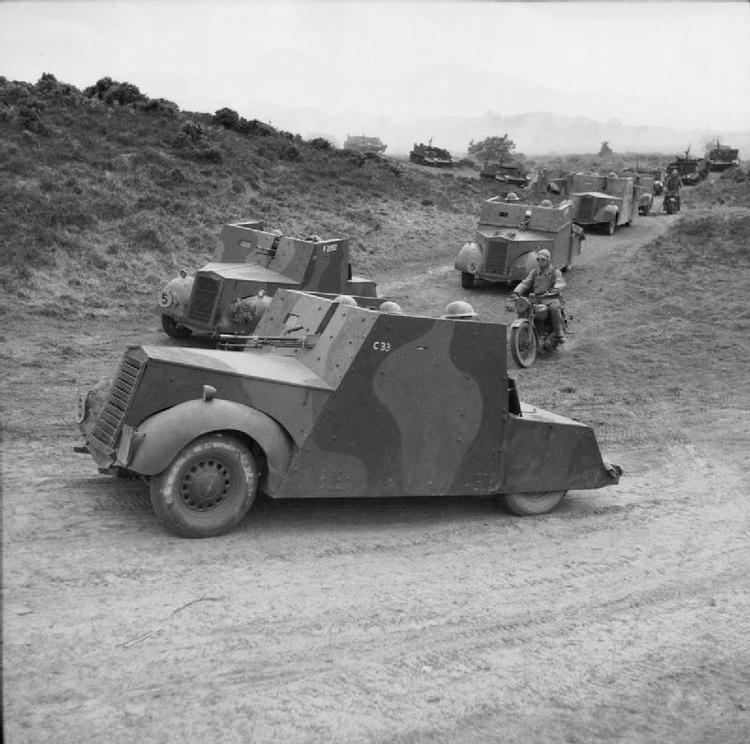Type Armoured car | Place of origin United Kingdom | |
 | ||
Weight Mk I: 2 tonnes (2.2 short tons; 2.0 long tons)Mk III: 2.6 tonnes (2.9 short tons; 2.6 long tons) Length Mk I: 4.11 m (13 ft 6 in)Mk III: 3.10 m (10 ft 2 in) Width Mk I: 1.60 m (5 ft 3 in)Mk III: 1.73 m (5 ft 8 in) | ||
Standard Car 4x2, or Car Armoured Light Standard, better known as the Beaverette, was a British armoured car produced during the Second World War.
Contents
History
The first version of the vehicle was built in 1940 by Standard Motor Company at the instigation of Lord Beaverbrook, then Minister of Aircraft Production (hence the name Beaverette). It was based on commercial car chassis, on which a simple riveted armoured hull was mounted. The 11mm of steel was backed by 3 inch thick oak planks. The hull was open at the top and at the rear. The armament consisted of a Bren light machine gun which could be fired through a slot in the glacis armour. Subsequent versions received all-around protection and a machine gun turret - an enclosed one with Bren MG or an open-topped one with twin Vickers machine guns. Some vehicles also carried Boys anti-tank rifles. Some also had a No. 11 or No. 19 radio set. Production was stopped in 1942. About 2,800 units were delivered.
The Beaverette was used by the British Army and RAF Regiment for home defence service and training. The vehicle is said to have suffered from excessive weight and to have been hard to handle.
Variants
Survivors
A Mark III Beaverette is displayed at the Imperial War Museum Duxford. Another Mark III is in the Cobbaton Combat Collection, a private collection of military vehicles in Umberleigh, Devon in the United Kingdom A Mark IV Beaverette is displayed at the Museum Bevrijding Vleugels in the Netherlands. A second Mark IV is preserved at The Curragh Military Museum in Ireland.
